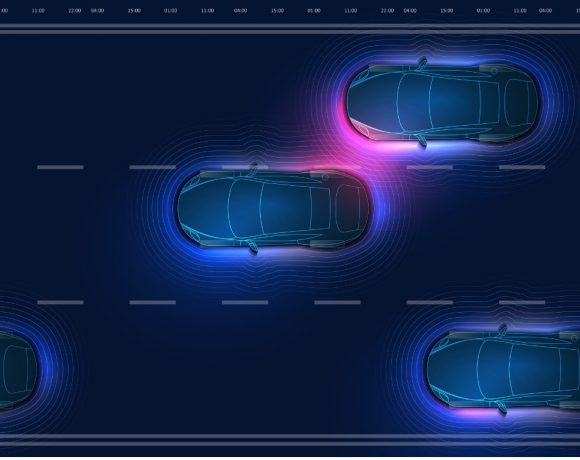- In the area of safety research, accident causation has been modelled in various ways to identify aspects to which safety measures can be applied for prevention.
- Injury surveillance is also particularly helpful in identifying trends and creating awareness about accidents caused by using new products in an unintended manner, for example, an increasing number of pedestrian accidents due to the use of electric scooters and skateboards in several cities.
- AI-based healthcare Decision Support Systems (DSS) trained on a large-scale collaborative healthcare data repository can help primary care providers efficiently handle common illnesses and injuries and redirect cases needing attention to specialists. Frontline healthcare staff, such as Accredited Social Health Activist in India, hospitals, medical appointments and telemedicine providers can use this DSS to conduct the first level of analysis.
During the COVID-19 period, an increase in motorbike accidents was observed in several places. Based on the injury description recorded at the hospital, the underlying reasons included increased demand for home delivery services and people inexperienced with motorbike driving opting to work for food and grocery delivery services.
According to the World Health Organization (WHO), each year, about five million people die, and many more get seriously incapacitated due to injuries caused by accidents. In the area of safety research, the causes of accidents have been modelled in various ways to identify aspects to which safety measures can be applied for prevention.
Early accident causation models were developed in the context of occupational safety after the perception of injuries changed from random events to a result of interaction between multiple factors involving the human and the environment. The earliest published accident causation model was the simple linear sequential “Domino model” by Heinrich in 1931. The Domino model views the accident as a set of failures of multiple elements (such as a person’s unsafe behaviour, mechanical failure, and social and physical environmental factors) in a sequential manner similar to dominos. The model expects that by eliminating one or more failures, the accident can be prevented. The later models of accident causation were based on the system theoretic approach which conjectured that accidents are the results of more complex interactions between a person, the environment, and other socio-physical factors.
By analysing the narratives of how the injury happened, we can understand the underlying causes of various injuries and thus identify prevention strategies. Injury surveillance is also particularly helpful in identifying trends and creating awareness about accidents caused by using new products in an unintended manner, for example, an increasing number of pedestrian accidents due to the use of electric scooters and skateboards in several cities.
Efforts to analyse injury data to understand why certain injuries happen and plan for preventive measures accordingly are ongoing. Some of the leading institutions doing this research include the Queensland Injury Surveillance Unit (QISU) in Australia, which collects emergency department-based injury surveillance data from several participating hospitals across Queensland, the Bureau of Labor Statistics in the US, which collects data about all workplace accidents, and various insurance companies that process medical claims.
Typically, injury data is collected by triage nurses during the initial examination at the hospital or noted by a supervisor at a work site in an unstructured form of the accident narrative. To statistically analyse the collected injury data, cause-of-injury codes (such as Burn, Cut by a sharp object, Fall, etc.) are assigned to each injury record based on the narrative. These codes, known as the International Classification of Diseases (ICD)- External causes of morbidity and mortality codes (E-codes), are developed by the WHO.
Manual coding of injury narratives consumes time and resources and has consistency and accuracy issues. This is due to the varying experience levels of human coders and the subjectivity involved in identifying the most applicable external cause code for a complicated accident. Accurate and timely coded injury data can lead to quicker identification of injury trends and associated causes of the injuries to effectively prioritise injury prevention efforts. This would be especially impactful in more populous regions such as India and China as the burden on hospitals can be reduced with prevention efforts that include updated safety policies and prescribed personal protection equipment.
Researchers have been working on using different artificial intelligence(AI) approaches to accurately and efficiently autocode (assign E-codes automatically using a classification model) the external cause of injury based on the injury narrative. Research studies have found that supervised machine learning (ML) models are effective in autocoding injury narratives. However, they have also cautioned that these ML models are not accurate enough for all categories to be used autonomously for coding injury data.
The contributing factors to the lower accuracy of ML models include a large number of E-code categories, errors in manual coding of training data used, the noisy nature of injury narratives (very few words with misspellings, abbreviations, etc.), and heavily skewed distribution of injury cases (a large portion of cases belonging to very few external code categories). To address this, a team of researchers from Purdue, QISU, and QUT have developed a decision support system that could assign injury codes to a large portion of data using ML models with extremely high accuracy and filter the remaining cases for expert review.¹
In most countries, healthcare systems are overloaded as they have limited resources and personnel, which became evident during the COVID-19 pandemic. AI-based healthcare Decision Support Systems (DSS) trained on a large-scale collaborative healthcare data repository can help primary care providers efficiently handle common illnesses and injuries and redirect cases needing attention to specialists. Frontline healthcare staff (such as Accredited Social Health Activist (ASHA) in India), hospitals, medical appointments and telemedicine providers (e.g. Practo in India) can use this DSS to conduct the first level of analysis by recording patients’ symptoms through mobile phones and directing them to the appropriate level of consultation and labs, thus saving a considerable amount of time and money. Hospitals and other medical service providers can collaborate to share anonymised data and medical expertise for annotations. With growing data and intelligence, the system will also enable early detection of health conditions, environmental factors leading to common injuries and illnesses, appropriate treatment and billing for insurance firms.
While AI-based systems can quickly analyse large amounts of data and take rule-based decisions, they do not have knowledge beyond the training data and cannot perform higher-order cognitive tasks such as formulating innovative approaches to solve problems. Additionally, most AI-based systems do not fare well in terms of explainability (which affects their trustworthiness) and usability (due to ignorance of human factors and naturalistic decision-making aspects during design).
To develop better AI-based DSS, some of the overarching research questions include: (a) How to efficiently combine information from multiple sources of data and expert knowledge (particularly when it is available in an unstructured form) and (b) How to collect good quality training data, i.e., how to identify the quality and utility of data points for training purposes, and (c) What are the general design principles for an AI-based DSS from a human factors perspective for its scalable use by a diverse population (particularly in the context of India)? While we progress with research in these areas, the AI-based decision support systems coupled with the increasing reach of mobile internet can be a game changer in improving the timeliness and quality of medical care and support for larger populations in rural areas with limited healthcare facilities.
(¹. Catchpoole, J., Nanda, G., Vallmuur, K., Nand, G., & Lehto, M. (2022). Application of a Machine Learning–Based Decision Support Tool to Improve an Injury Surveillance System Workflow. Applied clinical informatics, 13(03), 700-710.” )






NO COMMENT